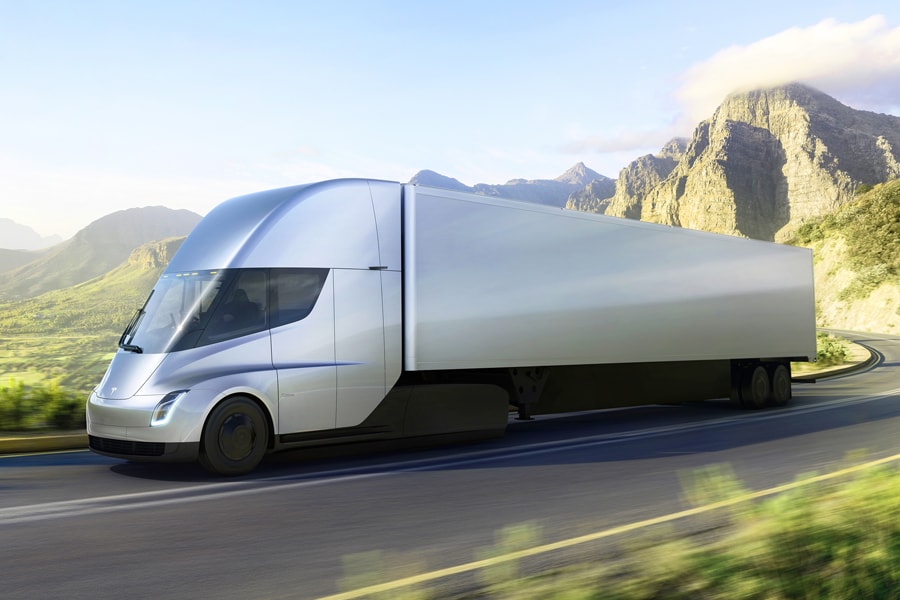
CMU Research Drives Economic Case for Electric Semi-Trucks
By Cody Januszko
Media Inquiries- Wilton E. Scott Institute for Energy Innovation
- 412-268-6741
Researchers at Carnegie Mellon University say it may be time to start investing in electric semi-trailer trucks.
In their new paper, "Quantifying the Economic Case for Electric Semi-Trucks," published in ACS Energy Letters, CMU Assistant Professor of Mechanical Engineering Venkat Viswanathan and Ph.D. student Shashank Sripad compare the cost of traditional diesel semi-trucks to electrically powered ones. The research was conducted, in part, at Carnegie Mellon's Wilton E. Scott Institute for Energy Innovation where Viswanathan is an energy fellow. Their work examines the point at which electric semi-trucks become more cost-effective than diesel trucks.
Viswanathan and Sripad's research demonstrates that the initial cost to invest in these electric semi-trucks may be worth paying. In addition to reducing the transportation sector's greenhouse gas emissions, switching to electric semi-trucks would have a strong economic case under a set of achievable targets. While a few unfavorable scenarios do not allow a meaningful payback period, in favorable scenarios, the period is around three years or lower.
"When the Tesla semi-truck was announced, it was important to understand how far it could go and what types of payload it could carry," Viswanathan said. "We decided to use the framework we had previously developed for electric commercial vehicles and apply it to semi-trucks."
In their paper, the authors examine the initial investment and the operating cost of a fleet of electric semi-trucks that can travel 500 miles compared with a fleet of diesel semi-trucks. Electric trucks have a lower operational cost because they have increased energy efficiency for mobility along with a comparable or lower cost per unit of electricity compared to diesel. However, the initial price of the lithium-ion battery pack used to power the trucks gives some investors pause.
"In spite of those initial concerns, there seems to be an economic case for transitioning to electric semi-trucks," Sripad said. "However, to ensure favorable economics, certain, important aspects like the low-battery pack cost, high cycle life and low electricity price need to be ensured."
Ultimately, the paper suggests various targets to be met to help with the transition to electric semi-trucks. First, the vehicle design should be optimized to reduce the battery pack size and meet the payload requirements of about 38,000 pounds. Second, the pack price should be reduced to less than $150 per kilowatt hour to encourage people to invest in electric semi-trucks. Third, a cost of electricity below $0.20 per kilowatt hour with a peak power of over 500kW per truck would ensure a fast re-charging without incurring a loss of valuable time. Finally, the battery pack cycle life will have to be improved so that the trucks will require fewer battery pack replacements over their lifetime.
Viswanathan and Sripad's previous research on electric semi-trucks has been widely viewed and cited. Their paper titled "Performance Metrics Required of Next-Generation Batteries to Make a Practical Electric Semi Truck" is the American Chemical Society Energy Letters' most read article of 2017. Real Engineering featured their research in a YouTube video that has garnered over two million views.
MIT Technology Review and The Drive highlighted their work on "Evaluating the Potential of Platooning in Lowering the Required Performance Metrics of Li-Ion Batteries to Enable Practical Electric Semi-Trucks."